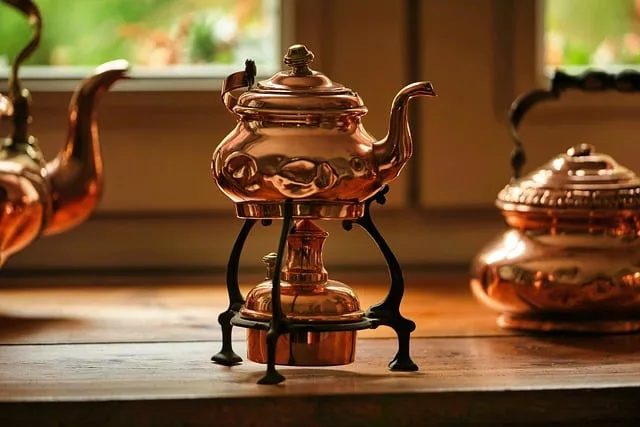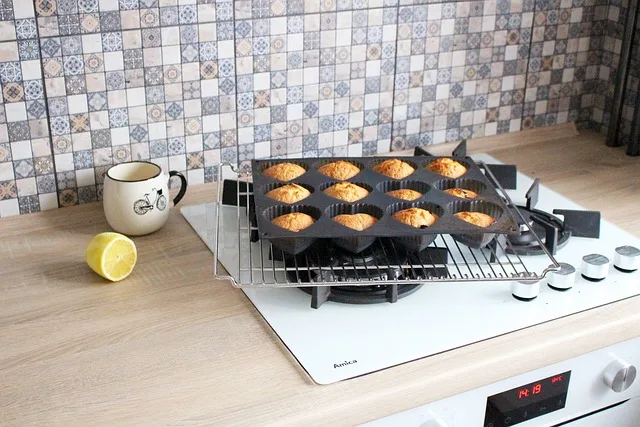First off, gather your supplies. You’ll need a soft cloth, warm water, a gentle dish soap, and a bit of white vinegar. Think of these items as your cleaning superheroes, ready to swoop in and save the day! Start by mixing a few drops of dish soap into a bowl of warm water. This bubbly concoction is perfect for lifting grime without damaging the wood.
Now, dip your cloth into the soapy water, wring it out, and start wiping down your cabinets. Picture this: you’re giving your cabinets a refreshing spa day! Make sure to follow the grain of the wood; it’s like giving them a gentle massage. For those stubborn spots, a little extra elbow grease might be needed, but don’t go overboard—oak is durable, but it still deserves some TLC.
If you notice any sticky residue or grease buildup, that’s where the vinegar comes in. Mix equal parts vinegar and water in a spray bottle, spritz it on the affected areas, and wipe it away. It’s like a magic potion that cuts through the mess!
Finally, don’t forget to dry your cabinets with a clean, dry cloth. This step is crucial because moisture can lead to warping or damage over time. Think of it as sealing the deal after a great cleaning session. With just a little effort, your oak kitchen cabinets will shine like new, making your kitchen feel fresh and inviting!
Revitalize Your Space: Expert Tips for Cleaning Oak Kitchen Cabinets
First off, start with a gentle touch. Use a soft cloth or sponge to wipe down your cabinets. Harsh scrubbing can scratch the surface, and nobody wants that! Think of it like giving your cabinets a spa day—gentle and soothing. For a cleaning solution, mix warm water with a few drops of mild dish soap. It’s like a refreshing drink for your wood!
Next, let’s talk about grease. If you love cooking (and who doesn’t?), your cabinets might have a bit of a greasy film. A mixture of equal parts vinegar and water can work wonders here. Just spray it on, let it sit for a minute, and wipe it away. It’s like magic—goodbye grease, hello shine!
Now, if your cabinets are looking a little dull, consider a wood polish. It’s like a moisturizer for your cabinets! Just apply a small amount with a soft cloth and buff it in. You’ll be amazed at how it brings out the natural grain of the oak. It’s like giving your cabinets a new outfit!
Lastly, don’t forget about the hardware. Clean those knobs and handles with a bit of soapy water, too. They’re the jewelry of your kitchen, and they deserve some love!
So, are you ready to transform your kitchen? With these simple tips, your oak cabinets will be the star of the show once again!
The Ultimate Guide to Restoring the Shine of Your Oak Kitchen Cabinets

First things first, gather your supplies. You’ll need a gentle cleaner, a soft cloth, and some mineral oil or beeswax. Think of this as your toolkit for a mini kitchen makeover! Start by wiping down your cabinets with a damp cloth to remove any surface grime. It’s like giving them a refreshing shower—who doesn’t feel better after a good wash?
Next, apply your chosen cleaner. A mixture of vinegar and water works wonders, but make sure it’s not too harsh. You wouldn’t want to strip away the natural beauty of the oak, right? After cleaning, dry the surfaces thoroughly. This step is crucial; water left behind can lead to unsightly spots.
Now, let’s talk about that shine! Grab your mineral oil or beeswax and apply it with a soft cloth. Picture this: you’re giving your cabinets a nourishing treatment, much like a spa day for wood. Rub it in gently, and watch as the wood drinks it up, revealing its rich grain and color.
From Grime to Glam: How to Effectively Clean Oak Kitchen Cabinets
First off, gather your supplies. You’ll need a gentle dish soap, warm water, a soft cloth, and a little bit of elbow grease. Think of this as your cleaning toolkit—like a superhero’s utility belt, but for your kitchen! Start by mixing a few drops of dish soap into a bowl of warm water. This bubbly concoction is your secret weapon against grime.

Now, dip your cloth into the soapy water, wring it out, and get to work. Gently wipe down the surfaces of your cabinets, following the grain of the wood. It’s like giving your cabinets a soothing spa day! For those stubborn spots, don’t be afraid to apply a little more pressure, but remember to be gentle—oak is beautiful but can be sensitive.
Once you’ve tackled the grime, rinse your cloth in clean water and wipe away any soap residue. This step is crucial; you don’t want your cabinets feeling sticky after their big clean! Finally, dry them off with a soft, dry cloth to prevent any water damage.
Natural Solutions: Eco-Friendly Ways to Clean Your Oak Kitchen Cabinets
First up, vinegar is your best friend. This powerhouse can cut through grease and grime like a hot knife through butter. Mix equal parts of water and white vinegar in a spray bottle, and you’ve got yourself a natural cleaner that’s tough on stains but gentle on your cabinets. Just spray, wipe, and watch the magic happen!
Next, consider baking soda. This little miracle worker is not just for baking! Create a paste with water and baking soda, and use it to scrub away stubborn spots. It’s like giving your cabinets a spa day—refreshing and rejuvenating without any toxic side effects.
Don’t forget about olive oil! Yes, you heard that right. A few drops mixed with vinegar can not only clean but also condition your oak cabinets, leaving them looking polished and protected. Think of it as a nourishing treatment that keeps your wood healthy and vibrant.
And if you’re feeling adventurous, essential oils can add a delightful scent while providing antibacterial properties. A few drops of lemon or tea tree oil in your cleaning solution can transform your kitchen into a fragrant oasis.
So, why settle for chemical-laden products when nature has provided us with such effective alternatives? Embrace these natural solutions and watch your oak kitchen cabinets shine, all while keeping your home safe and eco-friendly.
Say Goodbye to Stains: Proven Techniques for Maintaining Oak Cabinets
First off, let’s talk about prevention. Think of your oak cabinets as a canvas; the less you expose them to potential stains, the better. Use coasters under drinks and placemats under hot dishes. It’s like giving your cabinets a protective shield! And when spills happen—and they will—clean them up immediately. A quick wipe with a damp cloth can save you from a world of hurt later.
Now, if stains do sneak in, don’t panic. A mixture of mild soap and warm water can work wonders. Just dip a soft cloth in the solution, wring it out, and gently scrub the stained area. It’s like giving your cabinets a refreshing spa day! For tougher stains, a paste of baking soda and water can be your best friend. Apply it, let it sit for a few minutes, and then wipe it away. You’ll be amazed at how easily it lifts those stubborn marks.
And let’s not forget about regular maintenance. A good quality wood polish can not only enhance the natural beauty of oak but also create a barrier against future stains. Think of it as a protective armor for your cabinets. Just remember to apply it sparingly—too much can lead to a sticky situation!
So, whether you’re a cooking enthusiast or just someone who loves a tidy kitchen, these techniques will help you keep your oak cabinets looking fabulous for years to come.
Unlock the Secrets: Professional Cleaning Hacks for Oak Kitchen Cabinets
Now, if you’re dealing with stubborn stains or grease, think of baking soda as your trusty sidekick. Create a paste with a little water and gently scrub those trouble spots. It’s like giving your cabinets a spa day—refreshing and rejuvenating! And here’s a pro tip: always go with the grain of the wood. It’s like a gentle massage for your cabinets, ensuring you don’t scratch that beautiful oak finish.
Ever heard of mineral oil? This isn’t just for cooking; it’s a secret weapon for maintaining the luster of your cabinets. A few drops on a cloth can bring out the natural beauty of the wood, making it look like it just stepped off a magazine cover. Plus, it helps protect against future stains. Who wouldn’t want that?
Frequently Asked Questions
Can I use vinegar to clean oak cabinets?
Vinegar can be used to clean oak cabinets, but it should be diluted with water to avoid damaging the wood finish. A mixture of equal parts vinegar and water is effective for removing dirt and grime while being gentle on the surface.
How often should I clean my oak kitchen cabinets?
Regular cleaning of oak kitchen cabinets is recommended every 3 to 6 months to maintain their appearance and prevent buildup of grease and grime. For daily maintenance, a gentle wipe with a damp cloth is sufficient. Avoid harsh chemicals that can damage the finish.
What is the proper technique for cleaning oak kitchen cabinets?
To clean oak kitchen cabinets effectively, start by dusting the surfaces with a soft cloth to remove loose debris. Mix a solution of warm water and a few drops of mild dish soap. Dampen a cloth with the solution, wring it out, and gently wipe the cabinets, following the grain of the wood. Rinse the cloth with clean water and wipe again to remove any soap residue. Finally, dry the cabinets with a clean, dry cloth to prevent water damage.
What are the best cleaning products for oak kitchen cabinets?
For maintaining oak kitchen cabinets, use a gentle cleaner like a mixture of warm water and mild dish soap. Avoid harsh chemicals that can damage the finish. For deeper cleaning, consider a specialized wood cleaner or a solution of vinegar and water. Always test any product on a small, inconspicuous area first to ensure compatibility.
How do I remove stains from oak kitchen cabinets?
To remove stains from oak kitchen cabinets, start by mixing a solution of warm water and mild dish soap. Use a soft cloth to gently scrub the stained area, rinsing the cloth frequently. For tougher stains, consider using a mixture of vinegar and water or a baking soda paste. Always test any cleaning solution on a small, inconspicuous area first to ensure it does not damage the finish. After cleaning, dry the surface thoroughly to prevent moisture damage.